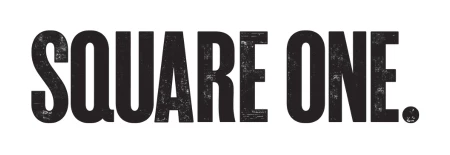Partner Article
Consumers Hesitant Toward Segmented Mobile Payments Market
Of all the smartphone users worldwide, 10% will make an in-store mobile payment in 2015 according to Deloitte. Comparing this to the actual number of users who did in 2014 - less than 0.5% of worldwide users - we can see the increasingly rapid growth of mobile payment technologies.
As mobile payments rapidly become more mainstream, the complexity of managing and processing transactions via multiple channels remains a continuous issue, influencing UX (user experience) and therefore the adoption of new payment methods. The current lack of unification in the mobile payments market stems directly from the large number of competing technologies and differing mobile strategies. Mobile wallets, integration with cards, online and now in-store mobile payments leave a range of options; none of which are available across channels.
The wide range of payment formats have facilitated a quick entry for mobile payments, yet, we are still waiting for them to take off. Why? Well, in most cases, the UX is too complicated. Without a standardized protocol for payment acceptance, mobile payments remain a complex process that users are unable to understand, manage and maintain as a consistent method to pay. There is a range of sociological and cultural barriers that must be surpassed for adoption of new payment technologies to take off. For retailers, however, the opportunity to accept mobile payments at the point of sale can offer a faster, simpler payment option, allowing merchants to process a direct-to-bank payment instantly and decrease time at the till.
Publicity about new mobile payment systems like ApplePay has indeed generated global interest in new payment methods, with consumers eager to use mobile payments in-store: almost half of mobile users in the UK said that they would like to use mobile payments according to a recent survey. Like ApplePay, there are many entrants who have offered a simple UX, however, no mobile payment system has really gained market share as of yet.
Part of the battle towards acceptance of mobile payments is the number of communication channels involved and payment options offered to consumers, which leads to dilution of quality in terms of a standardized ability to actually make a payment. Instead of becoming more streamlined, the market is now largely segmented, based on payments classified by the type of transaction i.e. Bluetooth and SMS payments, or payment acceptance channel like mPOS (mobile point of sale). This increased competition and the varied formats of mobile payments have made mobile payments much more complex and less accessible to users. Payments are habitual; people automatically reach for their wallet and use a certain payment type in certain situations. Mobile payments must be easily integrated with daily lifestyle choices and become ingrained into habits in order to work across the payment ecosystem.
Mobile payments need to be passive, allowing devices to communicate with each other instead of relying on the user. It is necessary to take the burden of responsibility off the user and create an intelligent experience which facilitates simplicity in payments instead of making the whole process more complicated. Passiveness of mobile payment technology is the absolute key to getting people to accept the new ways to pay.
The problem with mobile payments comes down to the fact that everyone is looking for a simple answer. This oversimplification has actually lead to a massive level of confusion in mobile payments and the payments ecosystem in general. This will only be resolved once payment service providers can establish a true omni-channel experience, where technologies merge to enable more streamlined payment options and user habits are taken into account. When all infrastructures allow for a simple payments UX, not only at the till but online, peer to peer and for both large and small businesses; mobile will empower this omni-channel experience. With payment processors striving to balance convenience and security, we’ve also seen the impact of security features diversify. Some payment platforms were released, having met basic security requirements, only to be launched and quickly realize that the system is easily tampered with or breached. Others require multiple levels of authentication, which is onerous on the users and detracts from the UX.
In most cases, the security element is really the first hurdle for the user. If it is not noticeably secure or if there are obvious questions about the security that cannot be answered by users, they won’t be willing to try it. Contactless payments, for example, don’t require authentication at point of purchase, unlike any other form of digital payment transaction. This makes consumers hesitant to trust this form of payment, and many mobile payments present the same frustration: if consumers don’t get it, they won’t be comfortable with using it.
Is it easy to use? Is there safe authentication in place? Will it save time? What are the benefits to me? These are the type of issues that users consider in a millisecond when at the till. The safety aspect must come first, as this could be a simple penetration point for a change in user attitudes to occur, as long as merchants are using the right security solutions for their new payment methods. Mobile security across the omni-channel offers the opportunity to build a solid foundation for increased consumer trust.
This omni-channel payment market needs to be implemented on a more intelligent, constructive basis. It cannot mean extra buttons or extra work for the consumer. The experience has got to be intelligent and unobtrusive so that users don’t have to work at it. Mobile payments need to be available to everyone - stripped back, simplified and easy to use with a guarantee of security.
High availability and penetration rates drive forward the opportunity for mobile payments to become universal across geographies, systems and technologies, enabling total financial inclusion. The payments ecosystem should strive to deliver this omni-channel payment experience through unification, standardization and security to take advantage of the huge opportunity presented by omni-channel mobile payments.
This was posted in Bdaily's Members' News section by Frances Stainthorpe .
Enjoy the read? Get Bdaily delivered.
Sign up to receive our popular morning National email for free.








 The real cost of tendering for construction SMEs
The real cost of tendering for construction SMEs
 A welcome step forward – but let’s keep pushing
A welcome step forward – but let’s keep pushing
 Industrial strategy 'can drive business forward'
Industrial strategy 'can drive business forward'
 Industrial strategy 'can be game-changer we need'
Industrial strategy 'can be game-changer we need'
 Driving skills forward with near £100,000 boost
Driving skills forward with near £100,000 boost
 What pension rule changes could mean for you
What pension rule changes could mean for you
 North East can't be an afterthought in AI future
North East can't be an afterthought in AI future
 Understanding the impact of the Procurement Act
Understanding the impact of the Procurement Act
 Is the UK losing ground in life sciences investment?
Is the UK losing ground in life sciences investment?
 Construction workforce growth can't be a quick fix
Construction workforce growth can't be a quick fix
 Why it is time to give care work a makeover
Why it is time to give care work a makeover
 B Corp is a commitment, not a one-time win
B Corp is a commitment, not a one-time win